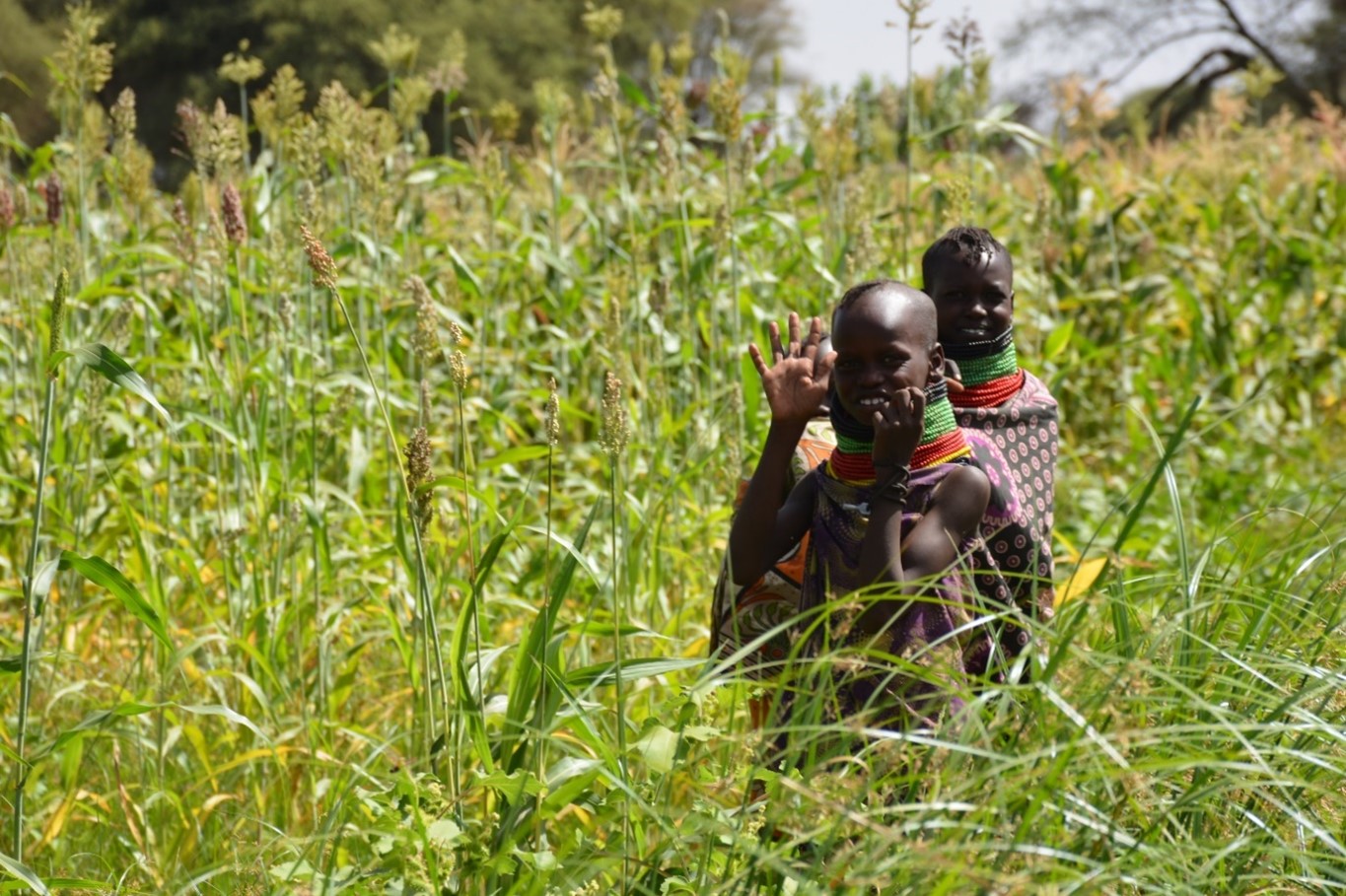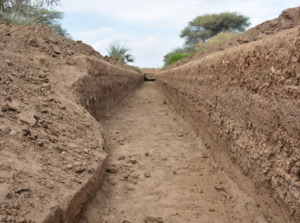Improving food security and community resilience in Kenya

“Water flow has transformed the community – a lot of change – the women and children are strong and are no longer hungry.” – Community member
In recent years, the Horn of Africa has experienced its worst drought in more than four decades, leading to a catastrophic hunger crisis, with famine-like conditions in pockets of the region.
In Kenya, the two-year dry period came against the backdrop of another drought emergency in 2017, desert locust infestation in 2020-2021 and the COVID-19 pandemic, the effects of which communities had not fully recovered from. The fragility and instability of the context and the vulnerabilities of community members have never been more apparent.
More than 500,000 people in Turkana County, Kenya, are food insecure. Only 48.2% of households have access to safe water, and people travel an average of 11 kilometers (nearly 7 miles) to the nearest water point. The nutrition security situation is dire, with Global Acute Malnutrition affecting 27% of the children, making it a phase 4 “Critical” emergency, and teetering on the brink of entering phase 5, the most severe ranking of nutritional crises, according to the Integrated Food Security Phase Classification (IPC), the five-phase scale used by the United Nations to assess a country’s food security situation.
The back-to-back emergencies in Kenya have pushed many traditionally-pastoralist communities out of practice, forcing people to diversify their livelihood options. But, despite trying their luck with options like farming, they are met with the daunting reality that the few existing agro-pastoral zones cannot optimize crop agriculture because of water scarcity, which is also fueling increasing inter-communal violence and conflict.
The Kang’alita community, a remote village in Turkana County home to 2,970 households, is no different. Pastoralists in Kang’alita have been forced to migrate in search of a water source to support their new farming ventures. However, even farming has been an unattainable alternative for food and income generation in recent years. The river levels were so low that the irrigation canal feeding water to the farms was clogged with silt for miles.
In October 2022, Concern talked to local farmers who expressed frustration about the clogged canal. By then, nothing had been planted on the 1,200 acres of farmland in Kang’alita for nine months, even though the land had the potential for continuous farming for at least three seasons out of the year. To resume local food production, the immediate need was to open the 7-kilometer (4.35 miles) long canal to connect Kang’alita’s agricultural lands to the nearest water source.
The Center for Disaster Philanthropy awarded Concern Worldwide – Kenya a grant in 2022 and 2023 to improve food security and resilience among vulnerable pastoral and agro-pastoral households and increase their ability to respond to and cope positively with the effects of the current drought and future climate shocks in Turkana and Marsabit counties, Kenya.
With support from CDP, Concern implemented a cash-for-work project to desilt the 6-kilometer Kang’alita canal. Concern collaborated with the farmers and provided cash assistance while farmers organized themselves to do the work.
The cash-for-work model provided immediate food relief by allowing community members to purchase food to meet their immediate needs and supported long-term recovery and resilience by restoring the functionality of the canal – a crucial community asset. It also allowed community members to be partners in the implementation and to play a role in generating long-term solutions. For example, the community reached out to the county government for canal lining after floods destroyed it, this is part of the community initiatives for sustainability.

Farmers worked diligently to clear the canal manually, and soon, water began flowing into the farms nonstop. Renewed water availability enabled 1,880 households (11,280 individuals) in Kang’alita to clear and cultivate 1,500 acres of farmland.
In the first season after clearing the canal, the community planted and harvested sorghum, maize, sweet potatoes, cowpeas, green grams, kales, spinach, onions and groundnuts, totaling 609 tons of produce with a market value of $469,647, achieved amid an ongoing drought. The community, without CDP and Concern’s continued support, planted and harvested for a subsequent season with an average harvest of 700 tons valued at above $500,000. This demonstrates the ability of climate-smart agriculture to improve food and nutrition security and resilience among the target communities.
The produce enabled households to meet their immediate food and nutrition needs and sell the surplus to address other critical household needs, such as accessing health care and education. Households also harvested seeds to replant for at least two more seasons, guaranteeing income during these periods and demonstrating the effectiveness of the intervention model in generating impact, even amid the food insecurity emergency response.
As part of the project, to ensure community members could continue cultivating the farmland, Concern also provided key resources, like assorted drought-resistant and early maturing seeds, farm tools, and training sessions on good agricultural practices. In addition, Concern and the county government trained community-own resource persons (CoRPs) and lead farmers to ensure the technical skills are retained and available within the community for sustainability.

Thanks to the food produced, the revenue gained and the creation of a community seed bank to support future planting seasons, the community is unlikely to require life-saving humanitarian support in subsequent years, achieving what Concern calls “graduation”—a process where community members are weaned off traditional humanitarian assistance, which only addresses short-term acute survival needs, and affords them the dignity of recovering from the impact of multiple shocks and returning to their journey of self-reliance.
The success of this project demonstrated that taking a two-track approach in the program design – supporting immediate relief efforts while simultaneously investing in longer-term solutions – and leveraging an emergency response intervention to build resilience achieves a much greater impact and leaves the community better equipped to confront current and future climate-related shocks.
Viewed against the background of the protracted drought, the two-track approach combined with the cash-for-work model stands out for its cost-effectiveness, high community participation and sustainability, making it a model of choice for beginning recovery programming while simultaneously responding to immediate emergency needs. In many protracted emergency contexts, where the future is uncertain, there is no knowing when the emergency is over. However, as this project demonstrates, there is no reason why you can’t start helping communities recover and become resilient while also meeting their immediate basic needs.
The project gave the Kang’alita community renewed impetus and belief in their ability to weather current and future droughts. The CDP funding had a catalytic effect in influencing other donors, including USAID/Bureau for Humanitarian Assistance (BHA) and Comic Relief, to support similar interventions. CDP-supported interventions have been visited by USAID/BHA, UNICEF, Foreign, Commonwealth and Development Office (FCDO) and county government leadership, this is instrumental in influencing resource allocation by other donors. CDP is proud to support Concern’s efforts to reduce food insecurity and empower communities to respond to, overcome and recover from the effects of climate shocks.
Story by Ruja Entcheva